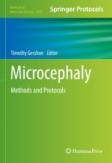Search
Search Results
-
Cerebellar Granule Cell
The cerebellar granule cells are the most numerous neurons of the brain. They are also among those with the simplest structure by emitting just four...
-
Granule Cell Migration and Differentiation
The develo** cerebellum granule cells migrate from their birthplace to their final destination. The active translocation of granule cells is...
-
Chorioamnionitis accelerates granule cell and oligodendrocyte maturation in the cerebellum of preterm nonhuman primates
BackgroundPreterm birth is often associated with chorioamnionitis and leads to increased risk of neurodevelopmental disorders, such as autism....

-
Insulin granule morphology and crinosome formation in mice lacking the pancreatic β cell-specific phogrin (PTPRN2) gene
We recently reported that phogrin, also known as IA-2β or PTPRN2, forms a complex with the insulin receptor in pancreatic β cells upon glucose...

-
Cerebellar Granule Cell
The cerebellar granule cells are the most numerous neurons of the brain. They are also among those with the simplest structure by emitting just four...
-
Disruption of protein geranylgeranylation in the cerebellum causes cerebellar hypoplasia and ataxia via blocking granule cell progenitor proliferation
The prenylation of proteins is involved in a variety of biological functions. However, it remains unknown whether it plays an important role in the...

-
Specification of Granule Cells and Purkinje Cells
Granule cells and Purkinje cells are the major populations of neurons in the cerebellum. Their specification depends on a combination of regional...
-
NR1 Splicing Variant NR1a in Cerebellar Granule Neurons Constitutes a Better Motor Learning in the Mouse
As an excitatory neuron in the cerebellum, the granule cells play a crucial role in motor learning. The assembly of NMDAR in these neurons varies in...

-
Development and validation of a machine learning algorithm prediction for dense granule proteins in Apicomplexa
BackgroundApicomplexa consist of numerous pathogenic parasitic protistan genera that invade host cells and reside and replicate within the...

-
A Colourful Way to Unravel the Important Fluidization-Related Granule Size Effect on Semi-Continuous Drying
Continuous twin screw wet granulation (TSWG) systems are possible pathways for oral solid dosage manufacturing in the pharmaceutical industry. TSWG...

-
PV-IRES-Cre mouse line targets excitatory granule neurons in the cerebellum
Parvalbumin-expressing inhibitory neurons (PV-INs) are critical for the balance and fine-tuning of complex neuronal circuits. Studies of PV-IN...

-
Adult-born dentate granule cells promote hippocampal population sparsity
The dentate gyrus (DG) gates neocortical information flow to the hippocampus. Intriguingly, the DG also produces adult-born dentate granule cells...

-
Proliferation Analysis of Cerebellar Granule Neuron Progenitors for Microcephaly Research, Using Immunofluorescent Staining and Flow Cytometry
Cell cycle progression is a vital aspect of neural development. Repeated cell division in neural progenitor populations amplifies the numbers of...
-
Cerebellar granule neurons induce Cyclin D1 before the onset of motor symptoms in Huntington’s disease mice
Although Huntington’s disease (HD) is classically defined by the selective vulnerability of striatal projection neurons, there is increasing evidence...

-
Complement Component C3 Loss leads to Locomotor Deficits and Altered Cerebellar Internal Granule Cell In Vitro Synaptic Protein Expression in C57BL/6 Mice
Complement component 3 (C3) expression is increased in the cerebellum of aging mice that demonstrate locomotor impairments and increased excitatory...

-
Dentate Gyrus Morphogenesis is Regulated by an Autism Risk Gene Trio Function in Granule Cells
Autism Spectrum Disorders (ASDs) are reported as a group of neurodevelopmental disorders. The structural changes of brain regions including the...

-
Development and Developmental Disorders of the Human Cerebellum
The cerebellum is one of the best studied parts of the brain. The cerebellar cortex is composed of four main types of neurons: granule cells,...
-
Burst firing is required for induction of Hebbian LTP at lateral perforant path to hippocampal granule cell synapses
High frequency burst firing is critical in summation of back-propagating action potentials (APs) in dendrites, which may greatly depolarize dendritic...

-
Effect of adult-born immature granule cells on pattern separation in the hippocampal dentate gyrus
Young immature granule cells (imGCs) appear via adult neurogenesis in the hippocampal dentate gyrus (DG). In comparison to mature GCs (mGCs) (born...

-
Dendritic morphology and inhibitory regulation distinguish dentate semilunar granule cells from granule cells through distinct stages of postnatal development
Semilunar granule cells (SGCs) have been proposed as a morpho-functionally distinct class of hippocampal dentate projection neurons contributing to...

